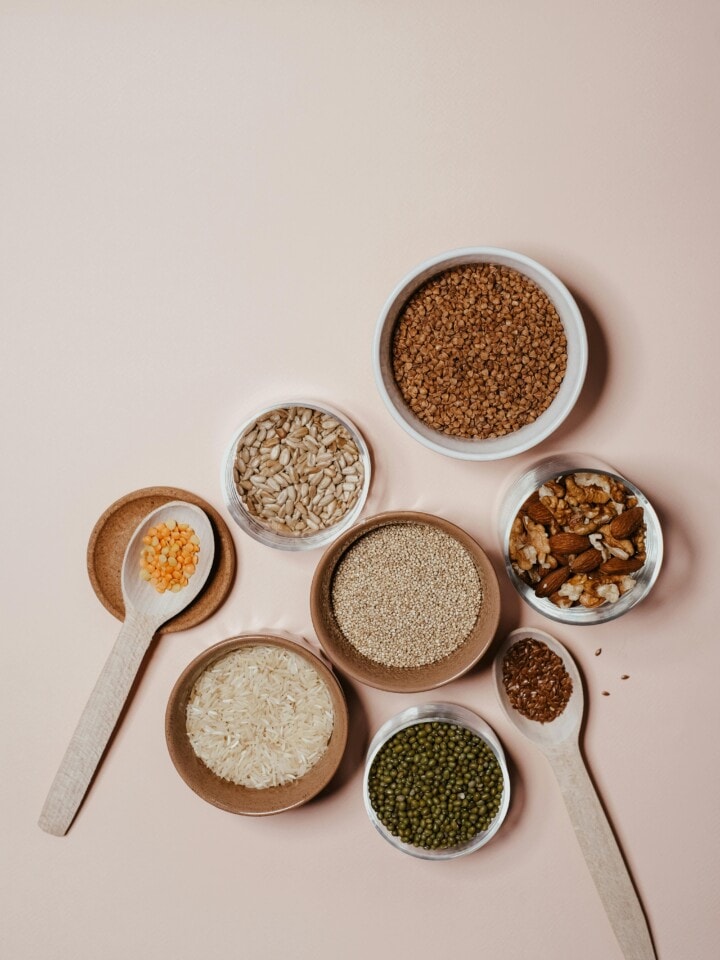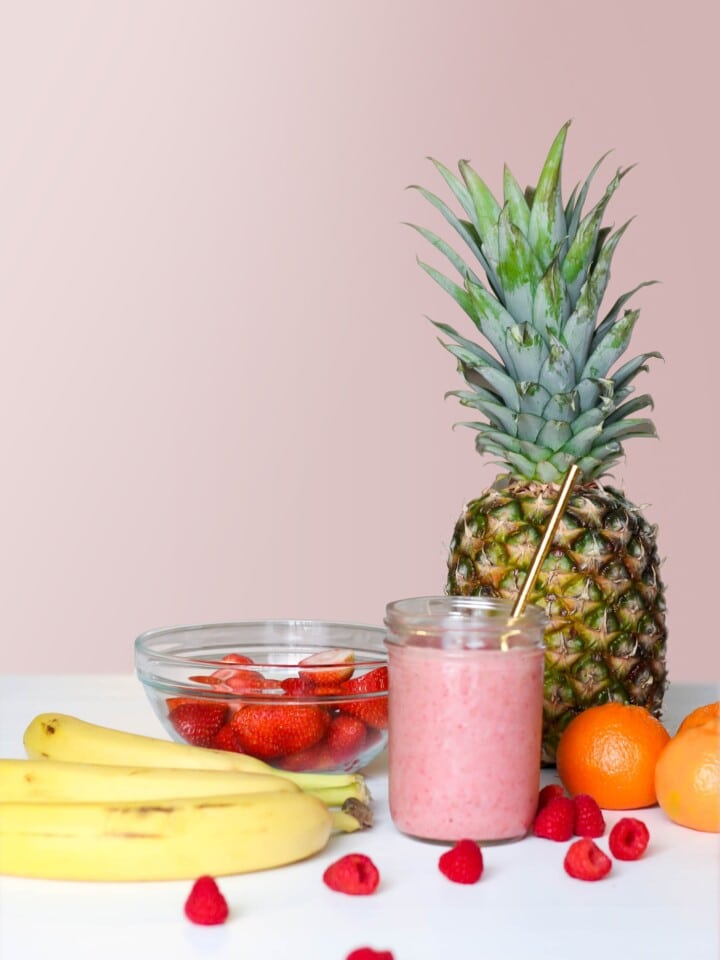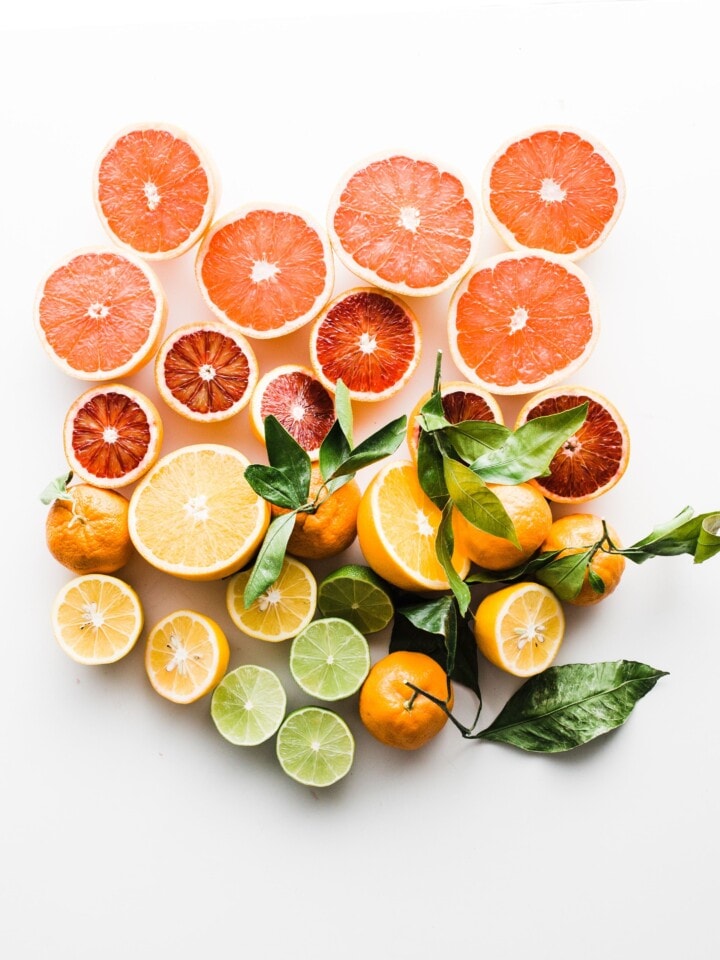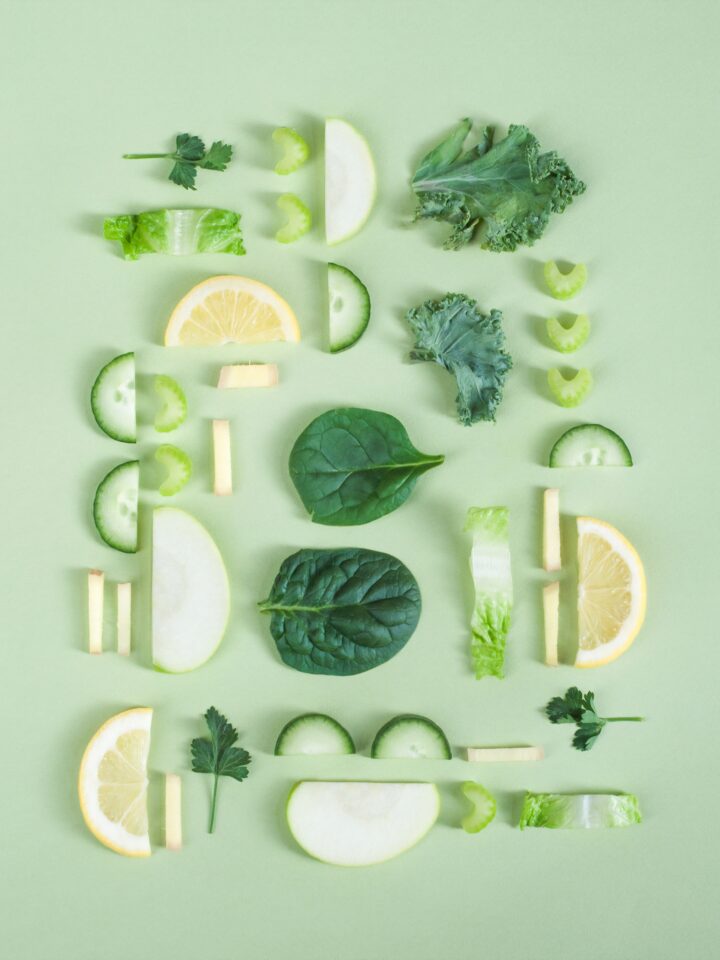
The Best Types of Lettuce + How To Use Them
DISCLAIMER: This post may contain affiliate links, which means that I make a small commission off items you purchase at no additional cost to you. Please read my policy page!
The Best Types of Lettuce + How To Use Them
When it comes to leafy greens, lettuce is a true kitchen staple. With so many varieties, each bringing its own unique flavor + texture, there's a perfect lettuce for every dish. In this guide to The Best Types of Lettuce, we’ll explore what they taste like, how to use them in your favorite recipes, and the best ways to store them to keep them fresh.

What Is a Lettuce, Anyway?
Lettuce is that trusty, crunchy green you toss into salads, stuff into sandwiches, and wrap around all sorts of tasty fillings. It's part of the Asteraceae family and comes in a bunch of varieties like crisp iceberg, hearty romaine, buttery butterhead, and other leafy greens. Whether you’re after a fresh crunch or a soft, delicate leaf, lettuce is low in calories, high in water content, and always ready to add a refreshing bite to your meals!
Jump to:
- What Is a Lettuce, Anyway?
- Is Lettuce Healthy?
- Romaine Lettuce
- Iceberg Lettuce
- Butterhead Lettuce
- Green + Red Leaf Lettuce
- Little Gem Lettuce (Baby Romaine)
- Spring Mix or Mesclun
- Are All Fresh Salad Leaves Lettuce?
- How To Best Store Lettuce + Keep It Fresh
- How Do I Keep Lettuce From Getting Soggy?
- How Do I Revive Wilted Lettuce?
- More Wellness Tips You Will Enjoy
- DID THIS HELP IN ANY WAY?
Is Lettuce Healthy?
Absolutely! Lettuce is a great addition to your diet. It’s low in calories, packed with vitamins like A and K, and rich in water to keep you hydrated. Plus, it has antioxidants that help fight off harmful free radicals. While not super high in fiber, it still supports digestive health. Different types, like romaine and leaf, offer a bit more nutrients than iceberg. Enjoy it fresh and raw for the most benefits!

Romaine Lettuce
Romaine lettuce looks like a bunch of long, crisp, and slightly wavy leaves that stand upright. It's often sold as a whole head or pre-cut into hearts. Its sturdy leaves hold up well to hearty toppings (hello lettuce cups) + bold dressings.
It tastes like:
Romaine lettuce has a fresh, crisp texture with a mildly bitter, yet refreshing taste.
How to use:
Toss romaine lettuce into salads like the classic Caesar or Cobb, use it in sandwiches and wraps, or even as a crunchy base for tacos + burger toppings.

Iceberg Lettuce
Iceberg lettuce is instantly recognizable by its round, compact head and crisp, pale green leaves.
It tastes like:
Iceberg lettuce has a mild, slightly sweet taste with a super refreshing crunch.
How to use:
Use iceberg in salads like a classic Wedge Salad, sandwiches, burgers, + wraps, or as a crunchy addition to tacos + grain bowls.

Butterhead Lettuce
Butterhead lettuce, including varieties like Boston and Bibb, has soft, tender leaves that form a loose, round head.
It tastes like:
Butterhead lettuce has a mild, slightly sweet flavor with a tender, buttery texture.
How to use:
Use butterhead in salads like this Green Goddess Salad, as a soft, flavorful base or for sandwiches + wraps with fillings (Definitely try my shredded chicken recipe if you haven't already).

Green + Red Leaf Lettuce
Green + red leaf lettuce have tender, frilly large heads of loosely arranged leaves
that add a touch of color and texture to your dishes!
It tastes like:
Green leaf lettuce has a mild, slightly sweet flavor, while red leaf offers a hint of earthiness with a similar mild taste.
How to use:
Use green and red leaf lettuce in mixed salads for added color and texture or as a base for fresh wraps + sandwiches.

Little Gem Lettuce (Baby Romaine)
These little cuties look like a mini version of romaine but with leaves that spread out nicely instead of staying tightly packed.
It tastes like:
They’re a delightful blend of romaine and butterhead, combining a crisp, tender texture with a buttery, sweet flavor and no bitterness.
How to use:
Gem lettuce is perfect for adding a fresh, crisp touch to your meals. Use it as a base for salads, a wrap for fillings, or a crunchy layer in sandwiches + burgers. Its versatile leaves also make a great garnish or a lighter alternative to taco shells.

Spring Mix or Mesclun
Spring mix, or mesclun, is a colorful blend of baby greens that includes various types of lettuce and other leafy vegetables. It has a mix of textures and shades, ranging from tender to slightly crunchy.
It tastes like:
Spring mix has a fresh, mild flavor with a hint of peppery and slightly bitter notes from the diverse greens.
How to use:
Use spring mix in salads, as a bed for meats like a pan seared steak of hot honey chicken or seafood, or as a vibrant addition to sandwiches + wraps

Are All Fresh Salad Leaves Lettuce?
Not all fresh salad leaves are lettuce. While lettuce often steals the spotlight as the go-to salad base, there are plenty of other leafy greens that bring their own flair, crunch, and nutritional punch to the table.
Non-lettuce greens:
- Spinach --- Tender + slightly sweet.
- Arugula (Rocket) --- Peppery + slightly bitter.
- Kale --- Sturdy and earthy, often used in heartier salads.
- Swiss chard --- Mild and slightly sweet, with colorful stems.
- Watercress --- Peppery + slightly bitter.
- Endive --- Crisp + slightly bitter.
- Radicchio --- Bitter and crunchy, with a vibrant red color.
- Mizuna --- Mildly peppery with a delicate texture.
- Beet Greens: Slightly sweet and earthy.
How To Best Store Lettuce + Keep It Fresh
I think we've all been there… finding soggy, wilted lettuce lurking in the back of the fridge, Haha. Here are some tips I personally use and love to keep things fresh and crisp!
Wash + Dry
- Give your lettuce a good rinse under cold water to wash away any dirt or sneaky bugs.
- Dry it completely. A salad spinner works wonders here, but if you don't have one, just pat the leaves dry with paper towels. Remember, wet lettuce is sad lettuce.
Wrap + Store + Refrigerate
- Wrap those dry leaves in a paper towel. This helps absorb any leftover moisture that could make your lettuce go limp.
- Pop the wrapped lettuce into a plastic bag or a container. If you're using a plastic bag, keep it slightly open to let the lettuce breathe a bit.
- Store your lettuce in the crisper drawer of your fridge. This is lettuce heaven—cool and just the right amount of humid.

How Do I Keep Lettuce From Getting Soggy?
The secret is to keep it dry! After washing your lettuce, make sure to dry it thoroughly. Use a salad spinner or pat it dry with paper towels. Then, wrap the leaves in a dry paper towel before storing them in a plastic bag or container. This helps absorb any excess moisture.
How Do I Revive Wilted Lettuce?
If your lettuce is looking a bit sad and wilted, you can perk it up by soaking the leaves in ice water for about 10-15 minutes. This can help restore some of its crispness.
There you have it— I hope learning about lettuce encourages you to try different types! If you are looking for any meal inspiration check out my "What To Eat This Week" series for some seriously delicious + healthy eats.
More Wellness Tips You Will Enjoy
If you loved learning about the different types of Lettuce and how healthy it is for you then check out these health + wellness tips next:
- 12 Favorite Healthy Green Leafy Vegetables
- Healthy Oils To Use For Everyday Cooking
- What the World's Longest Living People Are Eating
- Why Flour Lasts Longer When Refrigerated
- Jamaican Herbs That You Should Always Keep On Hand + Remedies
DID THIS HELP IN ANY WAY?
If you've learned anything from 'The Best Types of Lettuce + How To Use Them' or given any recipes on my website a go, I'd truly appreciate it if you could share your experience by leaving a ⭐ star rating and dropping your thoughts in the 📝 comments below. Your feedback means a lot, and I love hearing from you on your wellness journey!











LOVE THIS RECIPE?
LET US KNOW!